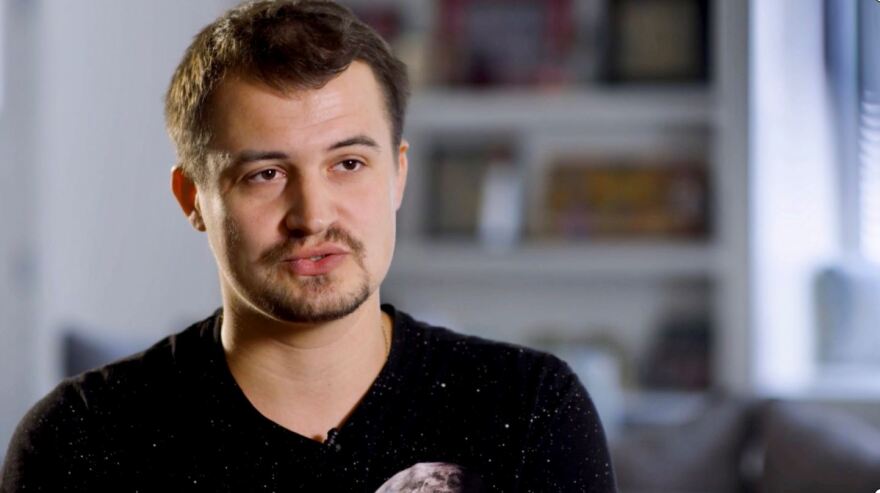Next week marks 35 years since the Chernobyl nuclear plant disaster. The 1986 explosion in the Soviet nation of Ukraine sent radioactive fallout drifting north over the neighboring country of Belarus. That’s where families in Alabama stepped in. During the years 1999 and 2000, over 200 Belarusian children were flown to the state for medical treatment and a chance to get away from the shadow of Chernobyl. APR and the University of Alabama's Center for Public Television collaborated on this coverage. "Children of Chernobyl" may have occured 20 years ago, but the story is still unfolding.
“I have a picture we took at the lake the other day, with Ivan and my other three kids,” said Susan Lee, who lives in Pelham Alabama. “And, I showed somebody the other day, and I said ‘here’s my four kids...I have four kids.’ So, he’s part of our family.”

It’s not unusual to have a favorite family group shot. But, in this case, getting everyone together to say cheese took 15 years. The reunion took place at Birmingham-Shuttlesworth International Airport in central Alabama. It’s late June of 2019, and no one is wearing a face mask. The COVID-19 outbreak is still eight months away.
“Going from the short, little, nine year old shy boy he was to now,” Lee said.
She stood by with her husband, her two sons, one armed with a home video camera, and a daughter in a wheelchair.
“He’s a man, and he’s successful, and smart and he’s educated and he’s caring and loving. And for us, he’s just a part of the family," Lee said.
It doesn’t take long for the guest of honor to appear. He’s a young man in his early thirties. He’s in a T-shirt, shorts, and sneakers. He’s also wearing a big grin as he glides down the escalator from the arrival gates for hugs captured on video. Greeting someone from out of town at an airport isn’t all that unusual. But, in this case, the term out of town doesn’t seem to cut it.

“My name is Ivan…Russian…Kovaliou,” he said.
Ivan and the Lee family last saw each other almost 20 years ago. But, when he talks about them, it doesn’t sound that way, especially when it comes to Susan.
“She was like my second mom,” Kovalieu said. “So, it was really cool that I became a member of their family at that time. It was like five minutes, that’s it.”
And it’s the international event that drew the Ivan and the Lee’s together that’s the point of today’s story. It was on April 26 of 1986. This was all five years before Ivan was born. He heard about it from his mother and grandmother.

“They told me about how they moved from the Chernobyl zone, to other parts of the country,” Ivan said.
Yes, Ivan means that Chernobyl. The nuclear plant disaster in the Soviet nation of the Ukraine sent up a cloud of radioactive iodine, cesium, and strontium-90. The fallout drifted north into the nation of Belarus where Ivan lives to this day. The news broke when scientists in Sweden detected the radioactivity. Ivan said he’s okay, but not everyone in his family was unaffected.
“My uncle was,” Ivan said. “He still takes some drugs for the radiation. So, I think it was an impact for everyone in the country.”
And Ivan’s uncle wasn’t alone. Studies show that following Chernobyl, the number of thyroid cancer cases jumped tenfold. That includes children where it rarely appears. That prompted families in Alabama and the state’s United Methodist Church to get involved. Starting in 1999, an estimated 200 children in the shadow of Chernobyl were flown to Alabama for medical treatment and a chance to spend time away from the threat of radiation.
“I think my first real experience was a year or two before we had Ivan stay with us,” Lee said.
Her family wasn’t part of the first wave. But they saw it.

“Some other families in church hosted, and so being a teacher, being someone who loves kids, I thought ‘oh my gosh, is this amazing,’” she said.
The program became known as Children of Chernobyl. And Ivan said it wasn’t just families in Alabama who were in on it.
“Actually, I hear about it from my mother,” Ivan said.
Soon, a 9-year-old Ivan, known then by the nickname of Vanya, would be making his first plane flight and his time meeting Americans. He figured his parents knew better.
“For example, if you don’t you want your child to go a country you hate, so you will not send them. It would be strange,” Ivan said.
It all sounds quick and easy. But organizers say it wasn’t. Over the next few days, we’ll look at how children of Chernobyl came together, how it went here in Alabama, and the impact it had on these families, on the children, and on the nation of Belarus itself. In part two, we’ll look at how the United Methodist Church got the Alabama program going, and how they needed someone on the inside to make it work.





